Backyard Ants
I realize that although my primary research interest is ants, I have yet to write about them here. Today I thought I'd start close to home and write a little about the ants in my backyard.
On Wednesday I watched several small colonies of Solenopsis aurea, a native fire ant, in my flower bed. They were preparing for a mating flight in response to the heavy rains.
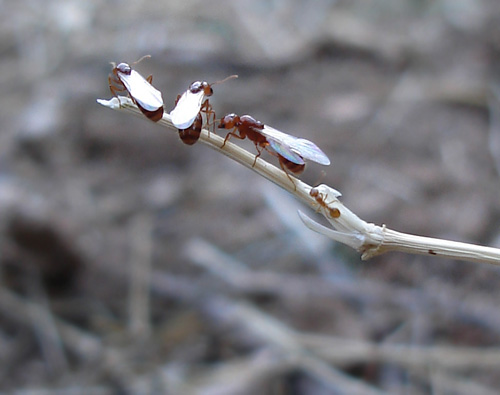
The female alates (winged reproductive ants) climbed carefully up a dry piece of grass, preparing for takeoff. In the photo above you can also see a medium-sized worker, who has follwed them up.
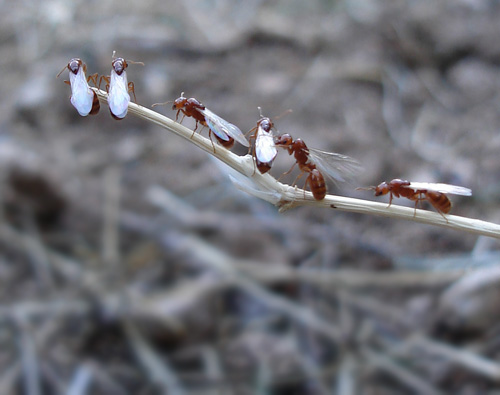
As the twig became more crowded, the alates at the end either took off or were knocked to the ground, forced to start the arduous journey up the twig again.
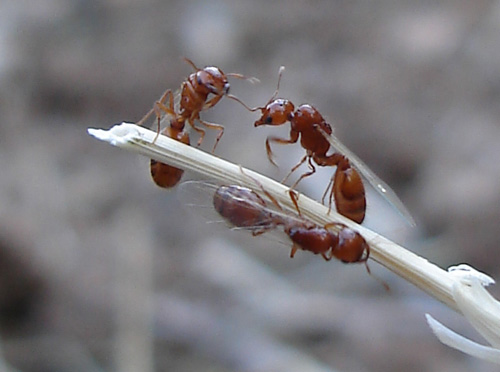
A large colony of a second species of ant, Forelius pruinosus, dwells under our brick patio. They are small, fast ants that can be quite active at high temperatures. Out of curiosity, I mapped their foraging trails across the backyard. This is the result:
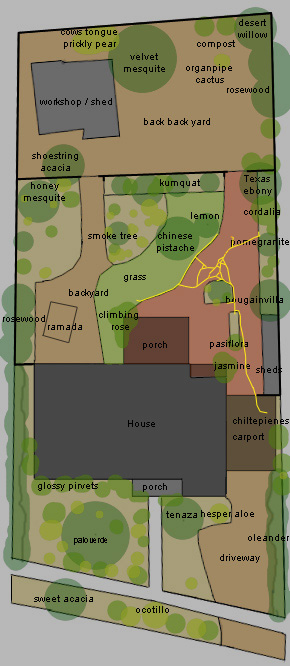
The nest has multiple exits, all located in the area of greatest trail density. The ant highways are anything but random- one takes the most direct route to the garbage can, a second leads to a wheelbarrow full of yard debris and compost, and a third heads to a flower bed.
I leave you with one last picture of a very beautiful and cryptic grasshopper on my mallow plant. True, it's not an ant, but it's nice anyway.
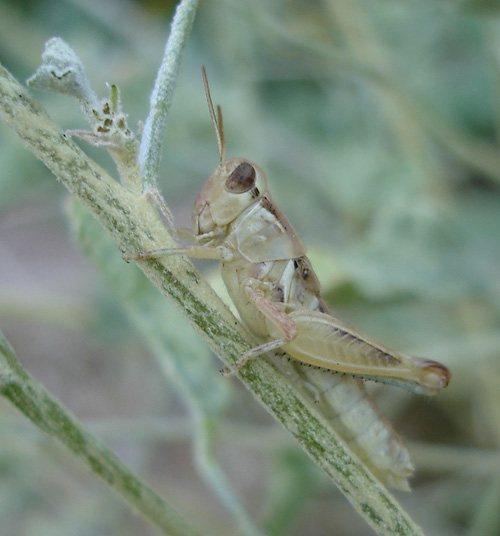
On Wednesday I watched several small colonies of Solenopsis aurea, a native fire ant, in my flower bed. They were preparing for a mating flight in response to the heavy rains.

The female alates (winged reproductive ants) climbed carefully up a dry piece of grass, preparing for takeoff. In the photo above you can also see a medium-sized worker, who has follwed them up.

As the twig became more crowded, the alates at the end either took off or were knocked to the ground, forced to start the arduous journey up the twig again.

A large colony of a second species of ant, Forelius pruinosus, dwells under our brick patio. They are small, fast ants that can be quite active at high temperatures. Out of curiosity, I mapped their foraging trails across the backyard. This is the result:

The nest has multiple exits, all located in the area of greatest trail density. The ant highways are anything but random- one takes the most direct route to the garbage can, a second leads to a wheelbarrow full of yard debris and compost, and a third heads to a flower bed.
I leave you with one last picture of a very beautiful and cryptic grasshopper on my mallow plant. True, it's not an ant, but it's nice anyway.


1 Comments:
excellent map
Post a Comment
<< Home